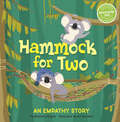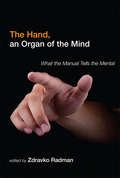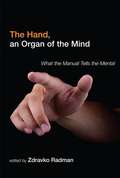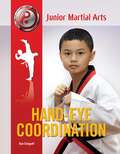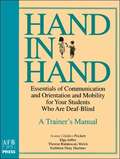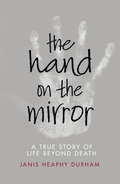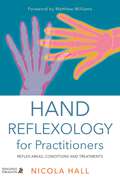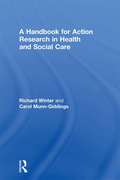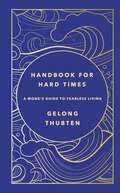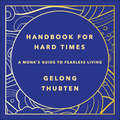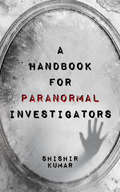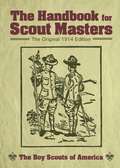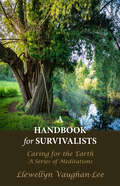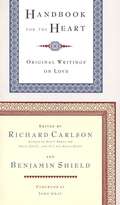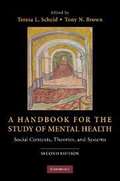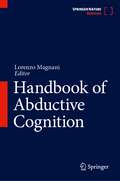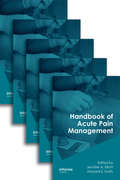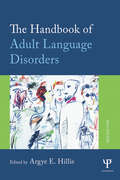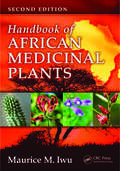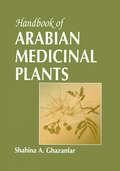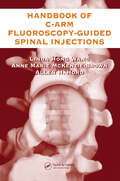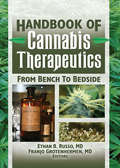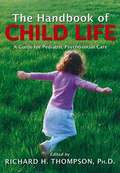- Table View
- List View
Hammock for Two: An Empathy Story (My Spectacular Self)
by Shoshana StopekSid the koala has a perfect new hammock, has found two perfect trees, and is ready for the perfect snooze. He can’t wait for his peaceful nap. Unfortunately, there is nothing peaceful about Sid’s neighbor. Marvin is so excited to have a new neighbor that he won’t leave Sid alone, which annoys Sid to no end. Will Sid realize how insensitive he’s being and show some empathy so these two koalas can be friends?
The Hand, an Organ of the Mind: What the Manual Tells the Mental
by Zdravko RadmanTheoretical and empirical accounts of the interconnectedness between the manual and the mental suggest that the hand can be understood as a cognitive instrument. Cartesian-inspired dualism enforces a theoretical distinction between the motor and the cognitive and locates the mental exclusively in the head. This collection, focusing on the hand, challenges this dichotomy, offering theoretical and empirical perspectives on the interconnectedness and interdependence of the manual and mental. The contributors explore the possibility that the hand, far from being the merely mechanical executor of preconceived mental plans, possesses its own know-how, enabling "enhanded" beings to navigate the natural, social, and cultural world without engaging propositional thought, consciousness, and deliberation.The contributors consider not only broad philosophical questions—ranging from the nature of embodiment, enaction, and the extended mind to the phenomenology of agency—but also such specific issues as touching, grasping, gesturing, sociality, and simulation. They show that the capacities of the hand include perception (on its own and in association with other modalities), action, (extended) cognition, social interaction, and communication. Taken together, their accounts offer a handbook of cutting-edge research exploring the ways that the manual shapes and reshapes the mental and creates conditions for embodied agents to act in the world.ContributorsMatteo Baccarini, Andrew J. Bremner, Massimiliano L. Cappuccio, Andy Clark, Jonathan Cole, Dorothy Cowie, Natalie Depraz, Rosalyn Driscoll, Harry Farmer, Shaun Gallagher, Nicholas P. Holmes, Daniel D. Hutto, Angelo Maravita, Filip Mattens, Richard Menary, Jesse J. Prinz, Zdravko Radman, Matthew Ratcliffe, Etiennne B. Roesch, Stephen V. Shepherd, Susan A.J. Stuart, Manos Tsakiris, Michael Wheeler
The Hand, an Organ of the Mind
by Zdravko RadmanCartesian-inspired dualism enforces a theoretical distinction between the motor and the cognitive and locates the mental exclusively in the head. This collection, focusing on the hand, challenges this dichotomy, offering theoretical and empirical perspectives on the interconnectedness and interdependence of the manual and mental. The contributors explore the possibility that the hand, far from being the merely mechanical executor of preconceived mental plans, possesses its own know-how, enabling "enhanded" beings to navigate the natural, social, and cultural world without engaging propositional thought, consciousness, and deliberation. The contributors consider not only broad philosophical questions -- ranging from the nature of embodiment, enaction, and the extended mind to the phenomenology of agency -- but also such specific issues as touching, grasping, gesturing, sociality, and simulation. They show that the capacities of the hand include perception (on its own and in association with other modalities), action, (extended) cognition, social interaction, and communication. Taken together, their accounts offer a handbook of cutting-edge research exploring the ways that the manual shapes and reshapes the mental and creates conditions for embodied agents to act in the world.ContributorsMatteo Baccarini, Andrew J. Bremner, Massimiliano L. Cappuccio, Andy Clark, Jonathan Cole, Dorothy Cowie, Natalie Depraz, Rosalyn Driscoll, Harry Farmer, Shaun Gallagher, Nicholas P. Holmes, Daniel D. Hutto, Angelo Maravita, Filip Mattens, Richard Menary, Jesse J. Prinz, Zdravko Radman, Matthew Ratcliffe, Etiennne B. Roesch, Stephen V. Shepherd, Susan A. J. Stuart, Manos Tsakiris, Michael Wheeler
Hand-Eye Coordination (Junior Martial Arts #9)
by Kim EtingoffMartial arts students don't just learn how to fight. They also learn lots of other important things they use every day--like hand-eye coordination, for example. We use hand-eye coordination for everything from writing to playing sports to using a computer. Practicing martial arts can improve your hand-eye coordination, so you'll do better in and out of school. Discover how martial arts can improve your hand-eye coordination!
Hand in Hand: A Trainer's Manual
by Elga Joffee Jeanne Glidden Prickett Kathleen Mary Huebner Therese Rafalowski WelchAn in-service training guide that presents structured information and guidelines for using the Hand In Hand materials with various audiences. Focusing on the needs of the trainer, this manual provides sample blueprints for individual workshops, as well as an overview of training, assessment, and evaluation. Also includes sample forms for conducting a pre-training needs assessment and post training evaluation.
The Hand on the Mirror: Life Beyond Death
by Janis Heaphy DurhamIn 2004, Janis Heaphy Durham's husband, Max Besler, died of esophageal cancer at age 56. While coping with her grief, Janis soon began encountering phenomena unlike anything she had ever experienced: lights flickering, doors opening and closing, clocks stopping at 12:44, the exact time Max died. But then something startling happened that changed her life forever. A powdery handprint spontaneously appeared on her bathroom mirror on the first anniversary of Max's death. Incredibly, a similar image appeared on the second and third anniversaries as well. Clearly, something otherworldly was occurring. This launched Janis on a journey that transformed her spiritually and altered her view of reality forever. She interviewed scientists and spiritual practitioners along the way, as she discovered that the veil between this world and the next is thin, and that love is what bridges the two.
Hand Reflexology for Practitioners: Reflex Areas, Conditions and Treatments
by Nicola Hall Matthew WilliamsFocussing specifically on reflexology of the hands, this book covers all the information needed for effective practice, increased understanding of theory, and skill development. Fully illustrated with photographs and diagrams, expert author Nicola Hall describes the positions and functions of the reflex areas in each hand, and covers the basics of body and hand anatomy. She introduces a wide range of techniques and explains how they relate to each reflex area, as well as exploring which reflex areas to target in order to treat common conditions and disorders. In addition to basic hand reflexology, other traditions are described, including Meridian therapy, Korean Hand Reflexology, Vertical Hand Reflexology, Synergetic Reflexology and Nail Reflexology, giving practitioners and students a complete overview of the modality.
A Handbook for Action Research in Health and Social Care
by Carol Munn-Giddings Richard WinterAction research is a form of research closely linked to practice which can readily be undertaken by practitioners and service users. This handbook offers a comprehensive guide to action research as a strategy for inquiry and development in health and social care. It can be used by individuals or groups working independently on their own projects or as a basis for a tutor-led course. It features* an introduction to the theories behind action research and other forms of research related to it*lively case studies from social work, nursing, mental health care and community work* a step-by-step study guide.The theoretical section of the book provides a general definition of action research, compares action research with other forms of social research, outlines the nature of a 'culture of inquiry' in the workplace, and describes the links between action research and service-user research, management,community development, evaluation, reflective practice, feminist research and anti-racist research.This practical study guide covers issues such as preparing a proposal, ethics and principles of procedure, gathering and analysing data, writing a report, the links between action research and critical reflection. It will be particularly useful for groups wishing to undertake action research on an independent basis
Handbook for Hard Times: A monk's guide to fearless living
by Gelong Thubten'Thubten is a very generous and kind monk who writes with the lived honesty and humour of someone who has experienced the wisdom he shares. His writing is full of inspiration but also the pragmatism needed to form a sustainable practice. He clearly illustrates why we all need meditation and mindfulness in our lives.'- Benedict Cumberbatch We all go through hard times. We can experience moments when life feels like an uphill struggle, leading to unhappiness and stress. Perhaps we are feeling sad, anxious, or are challenged to deal with something bigger, such as a bereavement, a loss, a painful ending or a broken heart. It is during these moments when life feels difficult that we could do with some help with our thoughts and feelings.In HANDBOOK FOR HARD TIMES Sunday Times bestselling author of A Monk's Guide to Happiness Gelong Thubten teaches us to understand that happiness, kindness and resilience can be cultivated through reframing life's difficulties as opportunities for transformation. Meditation and mindfulness practices help us to access deep reserves of inner strength as we learn how to 'lean into' our suffering. Thubten suggests how we can find meaning in pain and discomfort, transforming deeply ingrained patterns of fear and resistance.As we discover how hard times can enhance the development of mindfulness, compassion and forgiveness, we can develop a fearless outlook on life and lasting, unshakeable happiness. This approachable and practical book, complete with meditations, is designed for modern times, and will be a valuable resource to anyone during times of struggle, but also during all times to encourage and build resilience and help us find inner contentment and peace.'A most qualified guide in the journey from darkness and turmoil towards inner peace and positivity.'ANNIE LENNOX
Handbook for Hard Times: A monk's guide to fearless living
by Gelong Thubten'Thubten is a very generous and kind monk who writes with the lived honesty and humour of someone who has experienced the wisdom he shares. His writing is full of inspiration but also the pragmatism needed to form a sustainable practice. He clearly illustrates why we all need meditation and mindfulness in our lives.'- Benedict Cumberbatch We all go through hard times. We can experience moments when life feels like an uphill struggle, leading to unhappiness and stress. Perhaps we are feeling sad, anxious, or are challenged to deal with something bigger, such as a bereavement, a loss, a painful ending or a broken heart. It is during these moments when life feels difficult that we could do with some help with our thoughts and feelings.In HANDBOOK FOR HARD TIMES Sunday Times bestselling author of A Monk's Guide to Happiness Gelong Thubten teaches us to understand that happiness, kindness and resilience can be cultivated through reframing life's difficulties as opportunities for transformation. Meditation and mindfulness practices help us to access deep reserves of inner strength as we learn how to 'lean into' our suffering. Thubten suggests how we can find meaning in pain and discomfort, transforming deeply ingrained patterns of fear and resistance.As we discover how hard times can enhance the development of mindfulness, compassion and forgiveness, we can develop a fearless outlook on life and lasting, unshakeable happiness. This approachable and practical book, complete with meditations, is designed for modern times, and will be a valuable resource to anyone during times of struggle, but also during all times to encourage and build resilience and help us find inner contentment and peace.'A most qualified guide in the journey from darkness and turmoil towards inner peace and positivity.'ANNIE LENNOX
Handbook for Hard Times: A monk's guide to fearless living
by Gelong Thubten'Thubten is a very generous and kind monk who writes with the lived honesty and humour of someone who has experienced the wisdom he shares. His writing is full of inspiration but also the pragmatism needed to form a sustainable practice. He clearly illustrates why we all need meditation and mindfulness in our lives.'- Benedict Cumberbatch From the author of the Sunday Times bestseller A Monk's Guide to Happiness, this audiobook aims to help listeners discover a creative, transformative approach to dealing with life's challenges and difficulties.We all go through hard times. We can experience moments when life feels like an uphill struggle, leading to unhappiness and stress. Perhaps we are feeling sad, anxious, or struggling to deal with something bigger, such as a bereavement, a loss, a painful ending or a broken heart. It is during these challenging times that we could do with some help with our thoughts and feelings.In HANDBOOK FOR HARD TIMES The Sunday Times bestseller Gelong Thubten will guide us to understand that happiness, kindness and resilience can be cultivated through embracing life's difficulties as opportunities for transformation. Meditation and mindfulness practices help us to access deep reserves of inner strength as we learn how to 'lean into' our suffering. Thubten suggests how we can find meaning in pain and discomfort, transforming deeply ingrained patterns of fear and resistance.As we discover how hard times can enhance the development of mindfulness, compassion and forgiveness, we can develop a fearless outlook on life and lasting, unshakeable happiness. This approachable and practical audiobook is designed for modern times, and will be a valuable resource to anyone during times of struggle, but also during all times to encourage and build resilience and help us find inner contentment and peace.(P) 2023 Hodder & Stoughton Limited
Handbook for Itinerant and Resource Teachers of Blind and Visually Impaired Students
by Doris Willoughby Sharon DuffyProvides suggestions for teachers of the visually impaired
A Handbook for Paranormal Investigators
by Shishir KumarThat unexpected thud in the middle of the night, that lone blinking light, the sudden hiss in the eerie quiet, when goosebumps spike and a chill runs down your spine … is the fear unnecessary or should we be scared … very, very scared? Spirits, hauntings, ghosts, demons—some believe in them, some don’t. Some have even experienced them, some have safeguarded themselves with science. But whichever category you may fall into, one thing is certain—none of us fully understand the concept. Shishir Kumar, founder president and lead investigator of Team Pentacle, India’s most sought-after paranormal research organization, brings to you a handbook with the key to sense, recognize, grasp and accept the unknown. Using a blended approach of scientific methods and religious beliefs, this book explains the true nature of spirits and types of sightings. Departing from the tradition of myths and chants, this book intelligently humanizes the concept and arms the reader with the requisite knowledge to unravel sounds and shadows which seem to have no source. It utilizes New Age tools like Electronic Voice Phenomena and digital cameras for identifying and resolving spirit possessions and familiar sources like Ouija boards for communicating with them. The author provides a comprehensive, engaging and easy-to-follow guidebook for quenching those chills we are all too familiar with but so far have been unequipped to deal with. The book bridges the gap between the human and the ethereal which helps in driving out the fear, and brings into focus the need to act confidently and fearlessly. So, spooked or stoked, let’s unravel the mystery!
The Handbook for Scout Masters: The Original 1914 Edition
by The Boy Scouts of AmericaNow Available Again, the Original 1914 Rules, Regulations, and Lessons Necessary for Boy Scout Leaders First published in 1914, the Handbook for Scout Masters was the foremost compendium on leading and guiding a Boy Scout troop. Here, word for word, you can read all about just what it took to be a Scout Master, with a focus on the boys themselves. After all, the Boy Scouts&’ main purpose was &“not to exploit methods, not glorify movements . . . but to lead boys into useful lives&” (from the Introduction). Chapters from this classic, standard handbook include: Scout RequirementsPrinciples and MethodsTroop and Patrol ManagementDrills and DemonstrationsChivalry and MoralityAnd more! From age limits, hierarchies, and oaths to lessons on cooking, first aid, and nature, The Handbook for Scout Masters covers all the basics of what it took to lead a Boy Scout troop. Scouts and scout masters alike will love reading about the original guidelines to one of America&’s most well-known youth organizations.
A Handbook for Survivalists: Caring for the Earth, A Series of Meditations
by Llewellyn Vaughan-LeeWritten while under a wildfire evacuation warning, with bags packed, A Handbook for Survivalists explores the true nature of our survival at this pivotal moment in our shared journey together with the Earth. The present pandemic and its accompanying economic crisis, together with the widespread wildfires and flooding, have shown the fragility of our global systems and a dangerous imbalance with the natural world. Lengthening food lines and burned buildings, smoke-filled skies, have given us a foretaste of a future of climate crisis and radical uncertainty. What are the real values we need at this time when confronted by the divisiveness of our present culture in which the poor suffer most, and how can we transition into a future which respects the more-than-human world to which we belong?Looking deeper than merely physical survival, Llewellyn Vaughan-Lee explores the roots of this present imbalance in our separation from the Earth, and a vital need to reconnect, to regain the knowing of our ancestors who walked on sacred land. Returning to a deep awareness of our interconnected oneness with the living Earth, this book gives us the foundation for a new story for humanity, one not based upon exploitation and greed. A Handbook for Survivalists offers us tools to help in this transition, both in the resilience needed to survive the coming environmental and social breakdown, and in the ways to give birth to a living future. It explores subjects such as destiny, living with chaos, and the central theme of death and rebirth—how to seed a sustainable future for both humanity and the Earth.A Handbook for Survivalists is full of encouragement of how we can transition into this future without glossing over the catastrophes and hardships that we are already encountering. Combining an understanding of the potential for a real shift in consciousness with an awareness of the global forces resisting any such change, Llewellyn Vaughan-Lee takes us on a journey back to when our spiritual nature was bonded with the Earth and its magical nature. This is spiritual empowerment in its deepest sense because it transforms not just the individual but our relationship with the Earth and its diverse community to which we belong.A core element of this empowerment comes from understanding our spiritual nature in relationship to the Earth. Indigenous Peoples live this awareness through prayers, ceremonies, and other practices. We have mostly forgotten this dimension of our spiritual nature, but in our soul and within the world around us is a divine light that is needed to help us heal and nurture the web of life we are destroying. Learning to work with this light—which belongs to mystical and shamanic traditions—we can continue the practice of our ancestors and help to keep the world in balance.Finally this book offers a love story for the Earth. We can help the world remember what our culture has forgotten—how the soil, the seeds, the rivers and the stars all carry a central message of love. In all its diverse forms, its different ways of being and breathing, the living Earth is a celebration of love. And now it is calling out to us, crying to us to remember its sacred nature.
Handbook for the Heart: Original Writings on Love
by Richard Carlson Benjamin Shield John Gray“Handbook for the Heart offers a refuse from and illuminates the joys to be gained from your life in innumerable positive ways.” — from the Foreword by John Gray What is love? Why is it central to our happiness and personal growth? And how can we find it, nurture it, express it, keep it alive? In Handbook for the Heart, thirty-four of today’s best-known spiritual teachers provide us with answers—and illuminate the many ways we can I ill our lives with love. The author of Don 't Sweat the Small Stuff... an d It 's All Small I Stuff and Don't Worry, Make Money, as well as other bestselling hooks, Richard Carlson, Ph.D., is a practicing therapist and frequent lecturer on happiness and stress reduction. Benjamin Shield, Ph.D., is an educator, lecturer, and therapist who has written numerous articles on psychology, healing and spirituality. Together, Carlson and Shield created and edited the bestselling Handbook for the Soul, Healers on Healing, and For the Love of God. Cover design by Leslie Goldman Author photographs by Personal Touch Photo (Richard Carlson) and Thomas Lascher (Benjamin Shield)
A Handbook for the Study of Mental Health (2nd edition)
by Teresa L. Scheid Tony N. BrownThe 2nd edition of A Handbook for the Study of Mental Health: Contexts, Theories, and Systems provides a comprehensive review of the sociology of mental health, with chapters written by leading scholars and researchers. The volume presents an overview of historical, social, and institutional frameworks for understanding mental health and illness. Part I examines social factors that shape psychiatric diagnosis and the measurement of mental health and illness, the theories that explain the definition and treatment of mental disorders, and cultural variability in mental health. Part II investigates effects of social context on mental health and illness. Individual chapters consider the role of social statuses including class, gender, race, and age. Several chapters focus on the critical role played by stress, marriage, work, and social support, with a concluding chapter focusing on terrorism. Part III focuses on the organization, delivery, and evaluation of mental health services, including a discussion of the criminalization of mental illness, the mental health challenges posed by HIV, and the importance of stigma in meeting the mental health needs of individuals. A Handbook for the Study of Mental Health is a key research reference source that will be useful to both undergraduates and graduate students studying mental health and illness from any number of disciplines.
Handbook of Abductive Cognition
by Lorenzo MagnaniThis Handbook offers the first comprehensive reference guide to the interdisciplinary field of abductive cognition, providing readers with extensive information on the process of reasoning to hypotheses in humans, animals, and in computational machines. It highlights the role of abduction in both theory practice: in generating and testing hypotheses and explanatory functions for various purposes and as an educational device. It merges logical, cognitive, epistemological and philosophical perspectives with more practical needs relating to the application of abduction across various disciplines and practices, such as in diagnosis, creative reasoning, scientific discovery, diagrammatic and ignorance-based cognition, and adversarial strategies. It also discusses the inferential role of models in hypothetical reasoning, abduction and creativity, including the process of development, implementation and manipulation for different scientific and technological purposes. Written by a group of internationally renowned experts in philosophy, logic, general epistemology, mathematics, cognitive, and computer science, as well as life sciences, engineering, architecture, and economics, the Handbook of Abductive Cognition offers a unique reference guide for readers approaching the process of reasoning to hypotheses from different perspectives and for various theoretical and practical purposes. Numerous diagrams, schemes and other visual representations are included to promote a better understanding of the relevant concepts and to make concepts highly accessible to an audience of scholars and students with different scientific backgrounds.
Handbook of Acute Pain Management
by Jennifer A. Elliott Howard S. SmithPain is a pervasive symptom present in multiple areas of medicine. It is imperative that physicians not only evaluate and diagnose the source of pain, but that they also recognize how to manage the actual pain symptoms with effective treatment. Handbook of Acute Pain Management is an essential reference for professionals to enhance their knowledge
The Handbook of Adult Language Disorders
by Argye E. HillisThe Handbook of Adult Language Disorders is the essential guide to the scientific and clinical tenets of aphasia study and treatment. It focuses on how language breaks down after focal brain damage, what patterns of impairment reveal about normal language, and how recovery can be optimally facilitated. It is unique in that it reviews studies from the major disciplines in which aphasia research is conducted—cognitive neuropsychology, linguistics, neurology, neuroimaging, and speech-language pathology—as they apply to each topic of language. For each language domain, there are chapters devoted to theory and models of the language task, the neural basis of the language task (focusing on recent neuroimaging studies) and clinical diagnosis and treatment of impairments in that domain. In addition, there is broad coverage of approaches to investigation and treatment from leading experts, with several authors specializing in two or more disciplines. This second edition focuses on characterizing the cognitive and neural processes that account for each variant of aphasia as a first step toward developing effective rehabilitation, given that aphasia is one of the most common and disabling consequences of stroke. The best and most authoritative handbook in the field, The Handbook of Adult Language Disorders is the definitive reference for clinicians and researchers working in the scientific investigation of aphasia.
Handbook of African Medicinal Plants
by Maurice M. IwuA comprehensive review of over 2,000 species of plants employed in indigenous African medicine, this book provides a concise description of the materia medica of an enormous and extensively varied continent. It includes a detailed pharmacognostical profile of 170 of the major herbs, including the common name, synonyms, African names, habitat and distribution, medicinal uses, chemical constituents, and published pharmacologic activity. The profiles are presented in both alphabetic order and according to family. The book also provides an introduction to African traditional medicine.
Handbook of Arabian Medicinal Plants
by Shahina A. GhazanfarThe Handbook of Arabian Medicinal Plants is the first illustrated reference on the uses of plants in the Arabian Peninsula. It documents and preserves the existing knowledge in a region where social patterns are rapidly changing. The book emphasizes the need for preserving social and cultural patterns.
The Handbook of C-Arm Fluoroscopy-Guided Spinal Injections
by Linda Hong Wang Anne Marie McKenzie-Brown Allen HordFor some time now, C-arm fluoroscopy-guided spinal injections have been performed widely for both the diagnosis and management of spinal and paraspinal pain. Despite this common use, many residents and pain fellows do not receive formal training in the anatomy of the vertebral column as it relates to radiographic imaging, nor do they receive any tr
The Handbook of Cannabis Therapeutics: From Bench to Bedside
by Ethan B. Russo Franjo GrotenhermenLearn the facts behind the pharmacology and pharmacokinetics of controversial cannabis therapeuticsThe Handbook of Cannabis Therapeutics: From Bench to Bedside sets aside the condemnation and hysteria of society&’s view of cannabis to concentrate on the medically sound aspects of cannabis therapeutics. The world&’s foremost experts provide a reasoned, thoroughly researched overview of the controversial subject of cannabis, from its history as a medicine through its latest therapeutic uses. The latest studies on the botany, history, biochemistry, pharmacology, toxicology, clinical use for various illnesses such as AIDS, epilepsy, and multiple sclerosis, and side effects of marijuana are all examined and discussed in depth. This comprehensive resource is a compendium of articles from the Journal of Cannabis Therapeutics-with additional contemporary commentary. It presents startling research that explores and supports the medicinal value of cannabis use and its derivatives as a valid therapeutic resource for pain and inflammation, for several illnesses less responsive to other therapies, and even for certain veterinary uses. Cannabinoids such as nabilone, THC, levonantradol, ajulemic acid, dexanabinal, and others are extensively described, with a review of new indications for cannabinoid pharmaceuticals. The book is carefully referenced to encourage your examination of previous studies and provides tables and figures to enhance understanding of information.The Handbook of Cannabis Therapeutics discusses: the uses of cannabis in Arabic, Greek, Roman, and early English medicines absorption rates pharmacokinetics pharmacodynamics separate extracts versus the use of cannabis in its entirety the therapeutic value of the endocannabinoid system cannabinoids and newborn feeding a comparison of smoking versus oral preparations clinical research data on eating cannabis therapeutic uses as appetite stimulant treatments in obstetrics and gynecology medicinal treatments used in Jamaica the use of cannabis in the treatment of multiple sclerosis the benefits versus the adverse side effects of cannabis useThe Handbook of Cannabis Therapeutics is a reference work certain to become crucial to physicians, psychologists, researchers, biochemists, graduate students, and interested members of the public.
The Handbook of Child Life: A Guide for Pediatric Psychosocial Care
by Richard H. ThompsonIt has been said that the moral test of a society is how it treats its most vulnerable citizens. Those who enter the field of child life daily encounter those in our society who are among the most vulnerable . . . vulnerable because of their age and their ways of interpreting the world, vulnerable because of their physical circumstances, vulnerable because of the unfamiliar they encounter, vulnerable at times because of additional barriers such as language, poverty or prejudice. Yet, the child life specialist understands that each individual, despite the vulnerabilities he or she may bring to an encounter, also brings strength and resiliency. The task of the child life specialist is to build upon those strengths and to minimize individual vulnerability and maximize the growth of the individual. This book addresses the most important aspects of the practice of child life. The book is geared toward an audience beyond the introductory level and includes information on the state of the art in each chapter covered. Wherever possible, the book demonstrates application of the contents in practice through case studies. The goal of this text is to assist in this process, drawing upon the expertise of leading figures in the field to help provide child life specialists, and other allied health professionals, with the knowledge and skills they will need to accomplish this important task. Book jacket.
